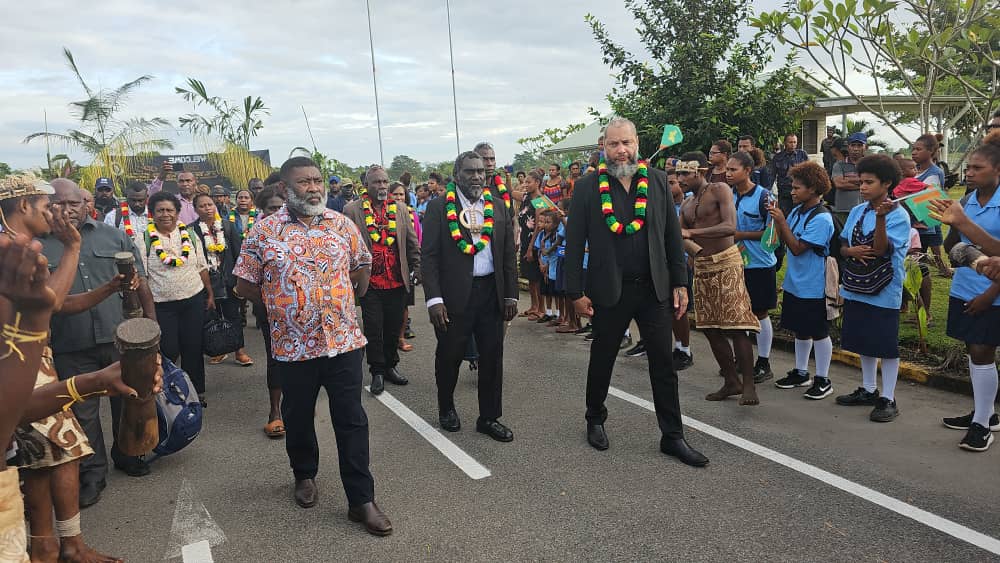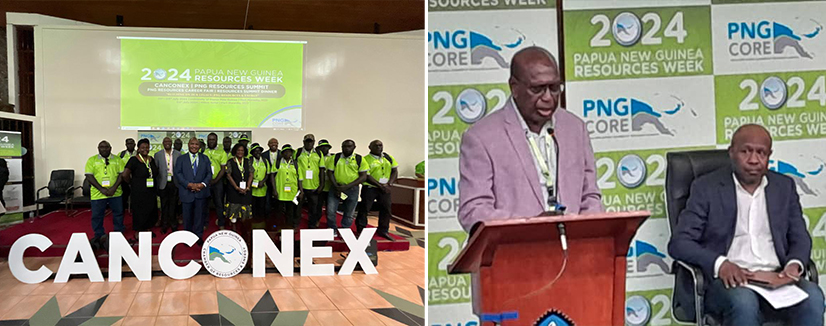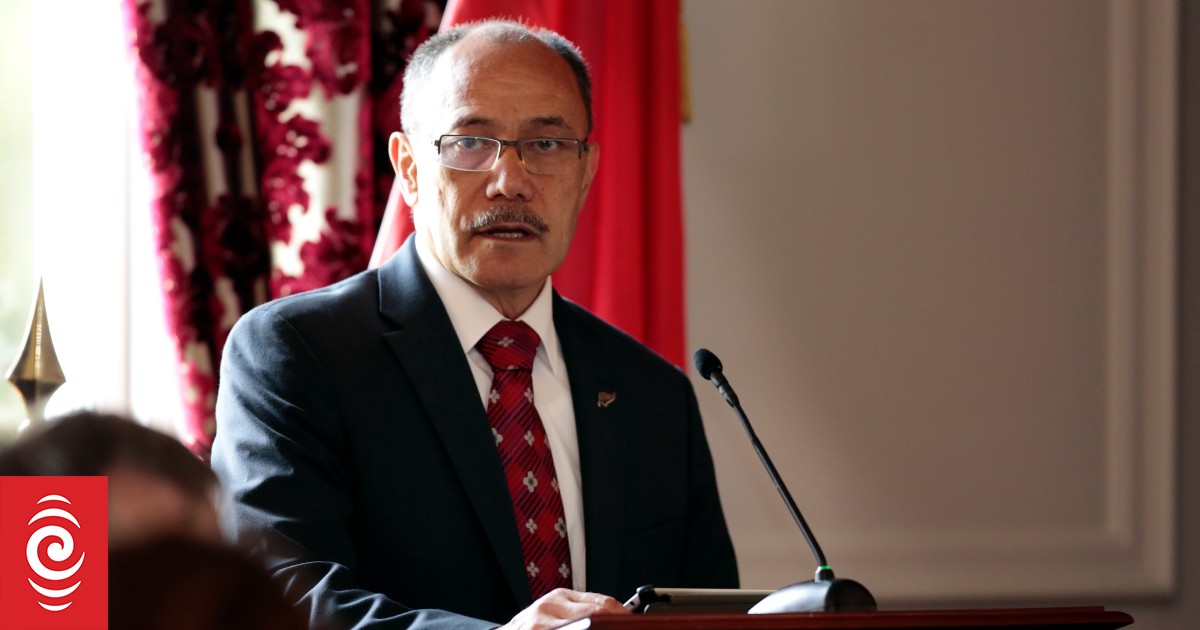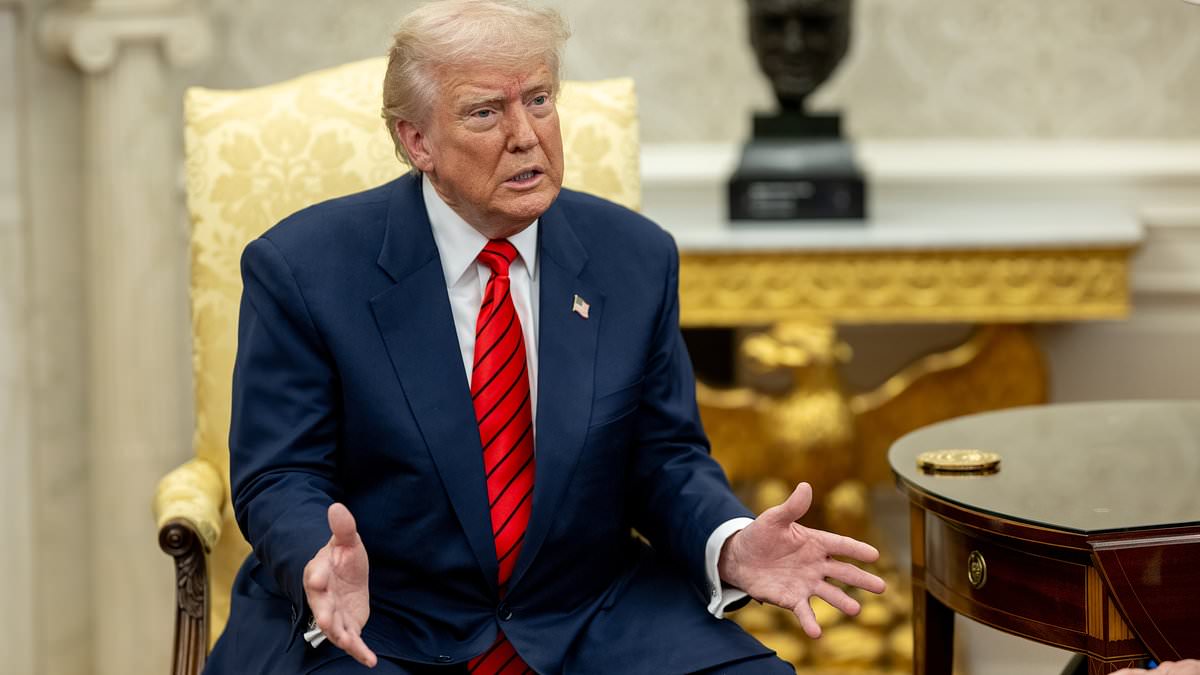Bougainville Copper Limited, or BCL for short, is the best-placed company to rehabilitate, re-engineer, re-finance, re-resource, construct and to operate the giant Panguna copper-gold deposit on Bougainville going forward. BCL is well-placed to tap into global mining and investment networks.BCL efficiently operated the world’s giant copper-gold mine from 1972 to 1989 when it was forced to shut down. It remains closed today. As it is, the Panguna deposit in real terms, has no real benefit to Bougainville, Papua New Guinea, landowners and wider shareholders. Panguna and the copper-gold rocks it hosts remains today just that … rocks in the ground.To this day, BCL maintains an extensive corporate and technical data base, going as far back from exploration, advanced exploration stages, prefeasibility stage, feasibility, construction and operational stages.The technical database is a uniquely powerful and invaluable resource. BCL’s technical team stands ready to reactivate this database on the agreement and legal permission of the Bougainville Government, Papua New Guinea Government and landowners within the current confines of the Bougainville Mining Act 2015.No company in Bougainville, Papua New Guinea, Australia or anywhere else have in their possession such as vast database as what BCL has for the Panguna deposit and mining including other related issues such as environmental, human resources as well as social and landowner matters.BCL of course has historical “mining footprints” on Bougainville. Clearly, over the years of operations there were environmental negatives. These environmental negatives certainly must not be repeated on the new Panguna mine development; modern mining practices must be instituted to the world’s best standard of mining. This new Panguna mine development will also be based on BCL equity arrangement.Rio Tinto in 2016 off-loaded it’s 53.7% stake in Panguna to Papua New Guinea and Bougainville. This decision has seen majority ownership transferred to the people of Bougainville and PNG.Recent discussion and subsequent public announcements by the government of PNG is to transfer shares to the people of Bougainville.In recent times several external companies have shown interest in the Panguna copper-gold deposit. These companies are not majority owned by Papua New Guinea, Bougainville, Panguna landowners or ordinary Papua New Guineas or Bougainvilleans in any form.My advice to the Bougainville government, Panguna landowners, and all ordinary “mums and dads” on Bougainville, is to support BCL to develop Panguna. One day when BCL declares dividends, most of these dividends will remain in Bougainville. This would be the greatest form of economic independence for Bougainville alongside other strengths like copra, cocoa, tourism and fisheries.
Bougainville Copper Ltd. / BOC (ASX)
-
-
-
-
Rio Tinto: wenn man etwas in hoch arroganter ( ich sage jetzt nicht "britischer" ) Weise gründlichst und auf Jahre hinaus versaut hat, ist es in der Tat schwierig.
Zu Gute halte ich denen, dass sie sich zurückgezogen und die Eigentümerrechte abgegeben haben..." britische Noblesse" ???
Es scheint fast, als wollten sie (Rio Tinto, siehe link oben) wenigsten eine Zehe in die Tür halten....
LF
-
Eher ein kluger Schachzug als brtitische Noblesse.
Mit BOC mehrheitlich in RIOS und PNG Besitz hätten die Landeigner nie einer Wiedererõffnung der Pangunamine zugestimmt.
Jetzt,ende Mai, wenn PNG die Shares an Bougainville, wie versprochen überträgt ist BOC eine lokale Firma und „ all ordinary “mums and dads” on Bougainville, is to support BCL to develop Panguna.„
Ueber 97% der B‘ viller stimmten im Referendum für die Unabhängigkeit von PNG.
Um nicht (nur) von Hilfszahlungen abhängig zu sein und substanzielle Steuereinnahmen zu generieren führt kein Weg an Panguna vorbei.
Spätestens wenn es um die Finanzierung geht wird RIO wieder bei ihrem Kronjuwel mitmischen,
Eine jetzt begonnene Evaluierung der Umweltschäden durch RIO mit anschliessender Beseitigung ist der erste Schritt
-

Will man 2027 unabhängig werden wird es höchste Zeit in die Pötte zu kommen
-
-
-
Das hört sich ja mal gut an, der Kurs in AU hat schon leicht reagiert.
 PANGUNA: WHAT WAS, WHAT IS, WHAT CAN BE - BCLCANCONEX Address by Sir Melchior Togolo 2 July 2024 INTRODUCTION On behalf of Bougainville Copper Limited (BCL), I thank the Chamber for the opportunity to be…www.bcl.com.pg
PANGUNA: WHAT WAS, WHAT IS, WHAT CAN BE - BCLCANCONEX Address by Sir Melchior Togolo 2 July 2024 INTRODUCTION On behalf of Bougainville Copper Limited (BCL), I thank the Chamber for the opportunity to be…www.bcl.com.pgINTRODUCTION
On behalf of Bougainville Copper Limited (BCL), I thank the Chamber for the opportunity to be part of this interesting session.
The Chamber with its emphasis on community affairs and sustainable development, has an important place as part of this inaugural PNG Resources Week.
It’s quite an exciting time for BCL, following the ABG’s decision in February to grant a five-year extension of our EL01 exploration licence, for the Panguna project area.
This was the culmination of a period of extensive dialogue between BCL and the ABG.
There was a mutual aim to amicably resolve what had been a long-running tenure dispute that dates back to a decision taken by the previous ABG in early 2018.
It is true we had to negotiate some difficult and complex issues, but through the commitment, goodwill, and mutual respect of both parties we found a way forward.
We certainly appreciate the opportunity and do not take for granted the faith placed in us by the ABG under the leadership of Hon. President Ishmael Toroama.
Compared to the past, BCL operates today as a truly local company. This is not a misconception. It is a fact.
For the first time, the ABG and people of Bougainville are set to become our clear majority shareholders.
They currently hold a 36.4 per cent share in BCL which is to increase to 76.8 per cent, once an agreed transfer of shares, held by the National Government, is realised.
The BCL board reflects our local identity, with five of seven directors being Bougainvilleans. That is more than 71% of the board.
In addition, and unlike others, BCL has offices in Buka and Arawa with a senior officer co-ordinating 11 Village Liaison officers (VLOs) embedded among our communities and another senior officer liaising with all levels of government on the island. All of them are the eyes and ears of the company.
With the ABG and others we share a common goal to make Bougainville stronger both economically and at the social and community levels.
It is widely recognised that the successful redevelopment of Panguna is pivotal to Bougainville’s self-reliance ambitions.
Importantly, the granting of the EL01 extension has the support of landowner communities and veterans with notable alignment among various groups. In other words, we understand our challenges, differences in opinions and perceived risks but we have a common goal a strong alignment exists to redevelop Panguna to help the island regain wealth and prosperity.
As I mentioned, BCL, through a well-established local team in Bougainville, has put considerable effort into building constructive relationships on the ground over several years. This extended to providing support for worthwhile community activities and projects.
An intimate understanding of the importance of local Nasioi customs, system of landownership, family and social dynamics, which is not well understood by non-locals, has helped us to build mutual respect and effective engagement.
So having been in something of a holding pattern for several years, certainty of tenure provides impetus to intensify our activities on the ground in accordance with the Bougainville Mining Act 2015.
The first phase of exploration will include social mapping and landowner identification studies followed by geological work to inform the necessary pre-feasibility and bankable feasibility studies. We have the IP (intellectual property) and technical advisers who are helping us to achieve this objective.
We will scale up our resources as required and explore the necessary investment and partnership opportunities as things advance.
As we move forward, we do so with respect for our regulator and the laws of the land. In this respect we are totally committed to industry best practice in all that we do.
THE IMPORTANCE OF COPPER
When Panguna previously operated between 1972 and 1989 it was among the world’s largest open cut copper mines.
In its 17 years, the mine produced three million tonnes of copper concentrate, 306 tonnes of gold and 784 tonnes of silver.
Significantly, based on latest resource statements at least 5.3 million tonnes of copper and 547 tonnes of gold remain in situ.
To put this into perspective, copper is currently trading at about US$9,500 a tonne and recently topped US$11,000 a tonne for the first time on the London Metal Exchange (futures).
Meanwhile, gold has been trading at about $74 million a tonne US. Even conservative estimates place the current ballpark value of Panguna’s remaining minerals in the tens-of billions-of-dollars.
The likes of Goldman Sachs (global investment banking) remain bullish about copper prices in the mid-term of the back of industry disruptions and declining inventories. (Industry cost cutting, industrial disputes, labour shortages, anticipated monetary easing and continued growth in copper demand among reasons for increasing pressure on supply).
In the longer term, others warn of a potential structural supply gap of up to 10 million tonnes per year by 2030, with new supply not keeping pace with demand. This is good for the Panguna deposit.
In no small part this is being driven by the global transition to cleaner energy in the quest to meet ambitious carbon emissions reduction targets.
Copper, because of its efficient transfer properties is an essential material in clean energy technologies with about five times the quantity needed when compared to traditional energy systems.
A conventional combustion engine for example contains 10-22 kilograms of copper whereas an electric car requires more than 80 kilograms.
Meanwhile, a single three MW wind turbine can contain up to 4.7 tonnes (4,700kg) of copper and a solar power system can require 5.5 tonnes per MW (5,500kg).
As it stands, about 35 per cent of current copper demand is met from recycling and while recycled copper is sufficient for products such as pipes & fittings; uncontaminated, virgin copper is the most suitable for clean energy technology. That is what Panguna copper concentrates will provide to help satisfy world demand.
Ominously, something like 200 copper mines around the world are expected to run out of ore before 2035 (in about 11 years). This augurs well for the Panguna deposit.
While expansion of existing mines, including the likes of Ok Tedi, will help ease some of the deficit through to 2030, Bloomberg Intelligence warns of the lack of new shovel-ready projects between now and then. The redevelopment of Panguna comes in handy.
It has been said that closing the predicted supply gap would require building the equivalent of eight new projects the size of the world’s largest mine (BHP’s Escondida mine in Chile).
Due to long lead times for green field projects, anywhere from 14 to 20 years, there is a strong logic to the redevelopment of a brown field project such as Panguna.
It is both a known and proven resource that is logistically accessible both to redevelop and to ship concentrate to market.
The fact the project also has the strong political backing of the ABG as well as landowners and veterans sends an important signal to would-be investors.
-
ECONOMIC BENEFITS
It is true that Panguna’s redevelopment will require substantial new investment in the billions of dollars to be realised.
An initial smaller scale, high grade operation with a lower upfront capital cost is perhaps feasible, with the option to expand scale output further, once initial production is well-established.
The feasibility process will of course explore the redevelopment options in detail.
Irrespective, Panguna’s redevelopment promises to be a transformational investment for Bougainville. The project will stimulate economic activity during three distinct phases, including (a) the exploration and feasibility phase which we have now entered, (b) the mine and ancillary construction phase, and (c) finally the operational phase.
It will produce significant dividends for government, landowners, including land access payments, investors, and shareholders alike with multiplier effects across the local economy, even cascading down to village communities.
During the construction phase for instance, it has been estimated that accommodation and services would be required for around 500 construction workers. To support the mine a new residential community would also need to be developed in Arawa.
In addition, local roads will need upgrading along with Aropa airport as well as ports such as Loloho and Kieta and local healthcare facilities. Legacy issues associated with previous operations could also be logically addressed during the mine’s redevelopment.
For the ABG, Panguna can potentially deliver substantial ongoing payments, including royalties, corporate taxes, GST from goods and services, withholding tax and personal income tax, not to mention the value of shares themselves and any associated dividends.
This year (2024), the ABG’s total budget is about K761 million or about US$197 million. Revenue from Panguna could deliver multiples of this for Bougainville, of course subject to metal prices and future taxation arrangements. To underline the potential, when the mine last operated, it consistently contributed between 15-20 per cent of PNG’s internally generated revenue.
Such revenue will help support the broader development of community infrastructure and services on Bougainville, leading to improved living standards for our local people.
The new employment and training opportunities for local people will be significant.
Panguna previously employed more than 3,500 people in its latter days of which 83 per cent were PNG nationals and Bougainvilleans.
Over the mine’s life, about 12,000 people received training, including more than 1,000 who completed trade apprenticeships and 400 who completed tertiary studies. This added real capacity to the national workforce and benefited subsequent projects in PNG.
In addition, since 1997, BCL has provided scholarships for more than 1,200 Bougainvillean students to pursue tertiary education under the Bougainville Copper Foundation. The program continues to this day.
The construction and operational phases of a redeveloped Panguna will also generate new demand for the provision of goods and services which in turn will promote the development of local SMEs across a range of areas, including cash crop (cocoa, copra vanilla etc.) development in agriculture.
Previously, local contract opportunities arose in construction, catering, transport, accommodation, trades and general labour, livestock production, security, and steel fabrication to name but a few.
Looking back, the original investment in Panguna as a greenfield development amounted to about $400 million (AUD) in 1969 which equates to about $4.0 billion (AUD) today.
Just like then, a sizeable investment in Panguna Mark II will be game-changing for Bougainville, triggering multi-dimensional changes to a struggling, fledgling local economy.
BCL, having been endorsed as a trusted project partner, stands ready to advance this priority project for the people of Bougainville.
Thank you, ladies and gentlemen.
-
Nach einigem Federlass seit April fängt sich Bougainville Copper gerade wieder, mit recht schönen Zuwächsen seit vergangener Woche.
Wohlmöglich wegen dieser Meldung hier:
Die Regierungen von Bougainville und Papua-Neuguinea haben den ehemaligen neuseeländischen Generalgouverneur Sir Jerry Mateparae beauftragt, die festgefahrene Situation in Bezug auf die Unabhängigkeitsbestrebungen von Bougainville zu lösen.
....
Beide Regierungen sagen: „Wir halten Sir Jerry für äußerst glaubwürdig, er kommt aus der Pazifikregion und genießt den Respekt unserer beiden Regierungen“.
 Bougainville and PNG confirm Sir Jerry Mateparae as moderatorThe two governments released a joint statement Tuesday to confirm the former NZ Governor General as the independent moderator to support resolving outstanding…www.rnz.co.nz
Bougainville and PNG confirm Sir Jerry Mateparae as moderatorThe two governments released a joint statement Tuesday to confirm the former NZ Governor General as the independent moderator to support resolving outstanding…www.rnz.co.nz -
Meine Böcke sind von April bis heute von 43 auf 26 Cent gefallen. (Tief ca. 25)
Da ich kein Charttechniker bin, kann ich die positive Entwicklung leider noch nicht sehen.
Die Einigung auf einen Mediator ist auf jeden Fall positiv.
-
-
Panguna-Mine
Umwelt und Menschenrechte
Folgenabschätzung
Die Umweltverträglichkeitsprüfung für die Panguna-Mine wird von einem unabhängigen Unternehmen (oder einem Konsortium) durchgeführt, das in keiner Verbindung zu Rio Tinto oder BCL steht und über fundierte Fachkenntnisse in den Bereichen Umwelt und Menschenrechte verfügt, wobei lokale und internationale Experten einbezogen werden.
-
Das zieht sich aber arg in die Länge mit dem Erreichen der Unabhängigkeit …
Eigenartig, daß bei dem riesen-Schatz, auf dem sie sitzen, in solch prospektiven Zeiten sich nichts so richtig tut!
Hier einige Sätze aus dem wieder mal aufflackernden Hoffnungsschimmer:
Trumps nächster Deal des Jahrhunderts?
Die goldene Insel: Bougainvilles Potenzial und Trumps Interesse
- Die strategisch günstige Lage Bougainvilles nördlich von Australien und der enorme Reichtum an Bodenschätzen machen die Insel zu einem interessanten Schauplatz im Machtkampf zwischen den Vereinigten Staaten und China.- Bougainville hat 2019 ein unverbindliches Referendum abgehalten, bei dem 98 % für die Unabhängigkeit gestimmt haben, aber für die tatsächliche Staatlichkeit ist die Zustimmung des Parlaments von PNG erforderlich.
- Das PNG-Parlament ist vorsichtig, diese rohstoffreiche Region zu verlieren, da es befürchtet, dass der Austritt einer Provinz anderen Provinzen Tür und Tor öffnen könnte.
Übersetzt mit DeepL.com (kostenlose Version)
Trump’s Next Deal of the Century?
The Golden Island: Bougainville’s Potential and Trump’s Intriguing Interest
- With the strategic positioning of Bougainville just north of Australia, and the island’s vast mineral wealth, it stands as a prize in the escalating power play between the U.S. and China.
- Bougainville held a non-binding referendum in 2019, where 98% voted for independence, but it requires PNG’s parliamentary approval for actual statehood.
- NG’s parliament is wary of letting this resource-rich region slip away, fearing that allowing one province to exit could open the floodgates for others.
 Gold-Rich Island: Trump's Next Deal of the Century? - TIme NewsThe Golden Island: Bougainville’s Potential and Trump’s Intriguing Interest Table of Contents The Golden Island: Bougainville’s…time.news
Gold-Rich Island: Trump's Next Deal of the Century? - TIme NewsThe Golden Island: Bougainville’s Potential and Trump’s Intriguing Interest Table of Contents The Golden Island: Bougainville’s…time.news -
Trump hat sich selbst aber nicht diesbezüglich geäußert.
Der Artikel ist nur ein journalistischer Wiederaufguß von Altbekanntem.
1. Marape muss sein Versprechen halten und die PNG Anteile an Bougainville übertragen.
2. Philipp Miriori und die SMLOLA müssen der Wiedereröffnung zustimmen.
solange das nicht passiert, passiert weiterhin gar nix außer
einem gelegentlichem Rauschen im Blätterwald
-
Panguna wird noch im Ozean versinken, bevor sich die Parteien geeinigt haben würden....
-
Panguna wird noch im Ozean versinken, bevor sich die Parteien geeinigt haben würden....
Bei den unvorstellbaren, im Raum stehenden Summen ist es unverständlich, daß an einer Lösung nicht fieberhaft gearbeitet wird!
-
-
PNG hat eine Art zu denken
Bougainville hat eine Art zu denken
Deutsche haben eine Art zu denken
Chinesen haben eine Art zu denken
.....
Das muss nicht unbedingt immer die gleiche Art sein.
Früher hieß das vereinfacht "andere Länder, andere Sitten"
-
Interessante Ausbrüche heute in Sydney…
Bougainville Copper (+16%)
Kingston Mining (+27%)Ob die miteinander etwas zu tun haben?
-
Habe gerade gelesen, dass Kingston sein Misima Goldprojekt an 0K Tedi Mining für 95 Mio. verkaufen wird, daher der Kurs Sprung.
-
Prime Minister James Marape is scheduled to make the formal announcement on Thursday, 26 June 2025, at Government House, confirming the transfer of the 146,175,449 ordinary shares – currently valued at over K140.3 million – to the Autonomous Bougainville Government (ABG).
Govt to transfer 36.45% stake in Bougainville Copper Limited to Bougainville | The PNG Bulletin
Wie pflege der Kaiser zu sagen: "Schau mer mal"
-
Braucht vielleicht wieder mal ein paar Tonnen Mineralwasser, um das alles zu bemurmeln....
-
